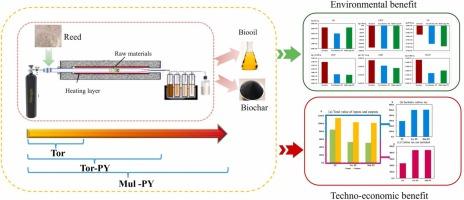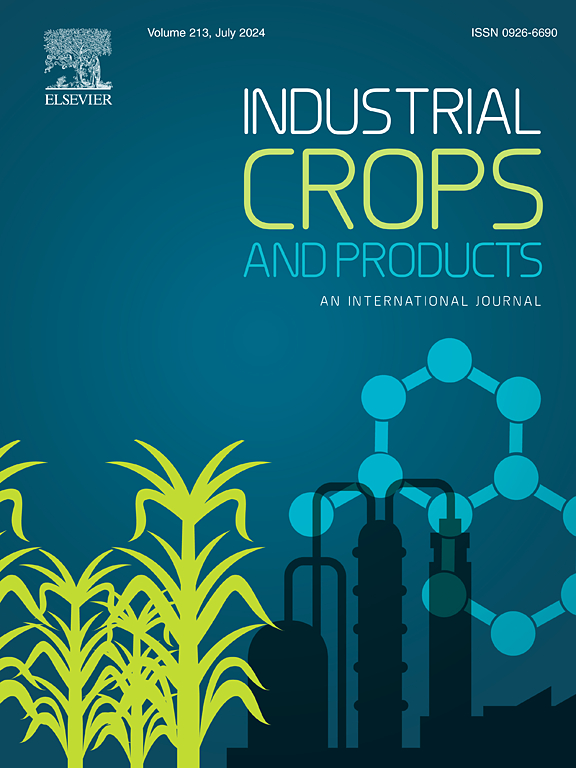Multi –stage thermal-chemical transformation of reed to produce phenol bio-oil and biochar: Process exploration and life cycle assessment
IF 5.6
1区 农林科学
Q1 AGRICULTURAL ENGINEERING
引用次数: 0
Abstract
Reeds contain a significant amount of lignocellulose, and the pyrolysis (PY) oil obtained from reeds has high water and acetic acid content, making it difficult to separate the bio-oil components. Torrefaction pretreatment can effectively dehydrogenate and deoxygenate, enhancing the quality of biochar. Based on the combination torrefaction of pretreatment and pyrolysis (Tor-PY), a multi-stage pyrolysis process (Mul-PY) utilizing different temperature intervals has been proposed. Experimental data show that this segmented reaction, which generates distinct components at various temperature ranges, effectively facilitates the preliminary separation of wood vinegar and phenolic compounds. Compared to PY, Mul-PY can enrich phenolic substances, with an increase of 43 % in their content. Additionally, energy and material flow analysis demonstrate that the energy consumption of Mul-PY is reduced by 1150 MJ/t compared to PY and by 250 MJ/t compared to Tor-PY. Meanwhile, the yield of biochar increased by 29.7 % and 1.7 % over PY and Tor-PY, respectively. Life cycle assessment and economic-technical analysis show that Mul-PY has good environmental benefits (GWP of −1301.06 kg CO2) and profitability (NPV of 69.14 $).

求助全文
约1分钟内获得全文
求助全文
来源期刊

Industrial Crops and Products
农林科学-农业工程
CiteScore
9.50
自引率
8.50%
发文量
1518
审稿时长
43 days
期刊介绍:
Industrial Crops and Products is an International Journal publishing academic and industrial research on industrial (defined as non-food/non-feed) crops and products. Papers concern both crop-oriented and bio-based materials from crops-oriented research, and should be of interest to an international audience, hypothesis driven, and where comparisons are made statistics performed.
 求助内容:
求助内容: 应助结果提醒方式:
应助结果提醒方式:


